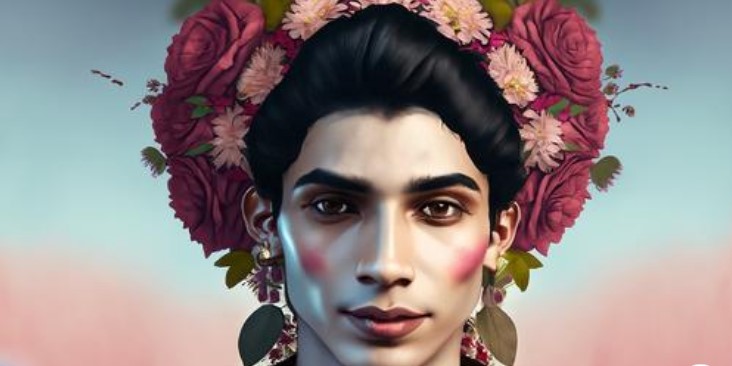A language can have gender-specific words, but have you ever thought of a language that is only spoken by a specific gender? In the age of digital transformation where you can translate any language on google; imagine having a language that is not even known to any other gender other than those who identify themselves as ‘transgenders’. Moreover, this secret language has never been documented – no books, novels, or poems have even been found in written form.
Hijra Farsi or Ulti Bhasa (Gupti) is spoken by the Hijras (a broad phrase that refers to both eunuchs, or men who are born male but are emasculated or castrated, and biological men who reject their masculine identity and adopt feminine gender roles and dress as women). Despite being described in the ancient texts, it is only recently that India, Nepal, Bangladesh and Pakistan have recognised the existence of the third gender in official documents. Kamasutra — the book on sexuality cites Hijras and their sexual life, other notable references are found in the Sanskrit epics: Ramayana and Mahabharata.
One can only imagine the humiliations and marginalisation that Hijras have gone through in society, and hence, a secret language provided them with a sense of belonging and bonding—something that can only be claimed by them. They resort to the language amongst each other in the presence of non-hijras but are reluctant to teach anyone else who is not a transgender. They often lie when a non-speaker asks them to translate the words.

Hijra Farsi: Spoken by the Muslim Hijras, no one knows how it began, and it is learned only through Gurus (parental figures). The new member of the trans community learns the language family structure, rituals and traditions.
It is interesting to note that the highest number that exists in the vocabulary of Hijra Farsi is Nira patt (one hundred thousand), which speaks volumes about their economic limitations.
Ulti Bhasa (Gupti): It is predominantly spoken in the western part of India and Bangladesh by the Hindu Hijras. Ulti contains words that are specific to the issues of the community– for instance, chapti (The opening left after castration), something highly exclusive to the Hijras.
Another fascinating thing about the Hijras is that they don’t only communicate with words but actions. The different rhythms of Hijra claps are used as secret codes to communicate emotions like sorrow, happiness, and anger.
Queer languages are the insignia of everything termed as ‘Queer’. They were extensively used by gay, lesbian, and transgender people to communicate and feel united. Like Hijra Farsi and Ulti Bhasa, Polari emerged as the secret language of Gay people in London. Slowly, it gained popularity amongst the homosexual people of the West who used it as a tool against the repression by Heterosexuals of society. Polari gained popularity in mainstream literature and was even used in BBC radio and TV programs. However, after Homosexuality was legalized, the use of Polari declined gradually. Today, it is acknowledged as a historically significant language and used by a few who want to stay true to the essence of it. It is quite contrary to the use of Hijra Farsi and Ulti Bhasa which are commonly spoken by the trans members of South Asia.
Scraping through the topmost layer of lavender linguistics tells us about the use of euphemisms to ease up the secret life of the sexually deviant but it goes much deeper than that – we don’t have identifiers or words that respectfully address the needs of the queer.
Many people may find it difficult to tag or name queer feelings/emotions in their mother tongue, on the other hand, do we feel ready to be exposed to queerness in a language that we have loathed for years?

